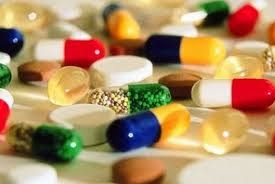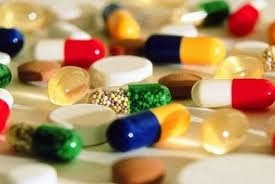A Commission study published today in Brussels shows a decrease in antibiotic use in the EU in 2012 compared to 2009, but another study by the European Center for Disease Prevention and Control (ECDC) is worrying. increase the resistance of nosocomial infections to antibiotics.
According to the survey, the percentage of Europeans who have taken antibiotics in the last 12 months was 35% in the EU compared to 39% in 2009. 47% of Cypriot respondents have used antibiotics in the last 12 months. The highest percentage of 48% concerns the Maltese. In Cyprus there is an increase of three units compared to 2009. In Greece the percentage was 36% increased by two units compared to 2009.
The data presented by EKPEN show a marked increase in Europe of highly resistant Gram-negative bacteria, which are resistant to carbapenem - a state-of-the-art antibiotic used to treat healthcare-related infections.
According to the director of EKPEN, the percentage of antibiotic resistance of bacteria increased between 2009-2012 in five countries, Greece, Spain, Portugal, Italy and Bulgaria, a development that he characterized as "very worrying".
The Commission Action Plan announced in November 2011 to prevent the further spread of antimicrobial resistance lists seven key areas where action is most needed: 1) ensuring the proper use of antimicrobials in humans and animals; 2) preventing microbial infections and their spread, 3) development of new effective antimicrobials or alternative therapies for treatment, 4) cooperation with international partners to reduce the risks of MA, 5) improving monitoring and surveillance in the medical and veterinary field , 6) research and innovation, 7) communication, education and training.
The EU has invested around € 800 million in research on antimicrobial resistance, including through the Innovative Medicines Initiative (IMI). The Commission today announced the launch of 15 new research projects with a total EU financial contribution of € 91 million. The projects, involving about 44 small and medium-sized enterprises, as well as universities and other research organizations, will develop new antimicrobials or alternative medicines, such as bacteriophages and vaccines. They will also focus on antibiotic resistance in the food chain and explore nanotechnologies that could produce antimicrobial drugs.
Particular efforts have been made to strengthen and consolidate surveillance systems for antimicrobial consumption and antimicrobial resistance in the veterinary sector. A Commission decision, published this week, lays down rules for the harmonized collection of data on MA in animals and food. This is important for the comparability of data between Member States, both in the field of medicine and veterinary medicine, and for the evaluation of the measures taken.
Various projects funded under the health program cover, for example, the misuse of antimicrobials in medicine, the awareness of stakeholders - doctors, farmers, pharmacists and patients - and the sale of over-the-counter antimicrobials. In addition, the Commission is in the final stages of reviewing the legal instruments for veterinary medicines and medicated feedingstuffs, which will cover MA in these areas.
In May this year, the Commission adopted a proposal for a single, general animal health law focusing on disease prevention, which could reduce the need for antibiotics. With regard to human health, ongoing projects and actions co-financed by the Health Program support the implementation of the Council Recommendation on patient safety, including healthcare-related infections.
According to the Commission, antimicrobials include antibiotics, which are essential medicines for humans and animals, but can also be used as disinfectants, antiseptics and other hygiene products. Thanks to their use, the threat of infectious diseases has been significantly reduced. Antibiotics are an essential tool of medicine and are used in medical procedures such as transplantation and chemotherapy.
However, over time, the bacteria became resistant to antibiotics. This resistance was manifested by nosocomial infections, respiratory tract infections, meningitis, diarrheal diseases and sexually transmitted infections. Resistant bacteria can be transmitted from animals to humans through the food chain or by direct contact.
"I'm deeply concerned that antibiotics, which in the past allowed us to fight deadly bacterial infections and save many lives, are now becoming less and less effective," said Health Commissioner Tonio Botz. takes the challenge very seriously, remaining committed to implementing its action plan to tackle antimicrobial resistance in both humans and animals in a coordinated manner. "

